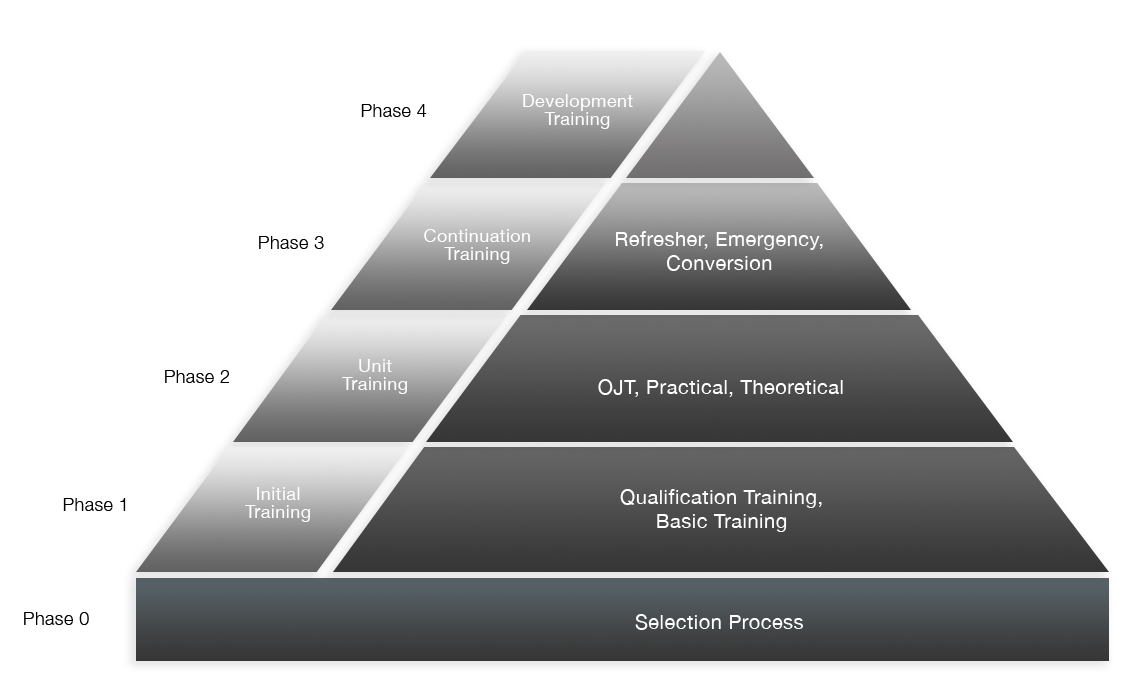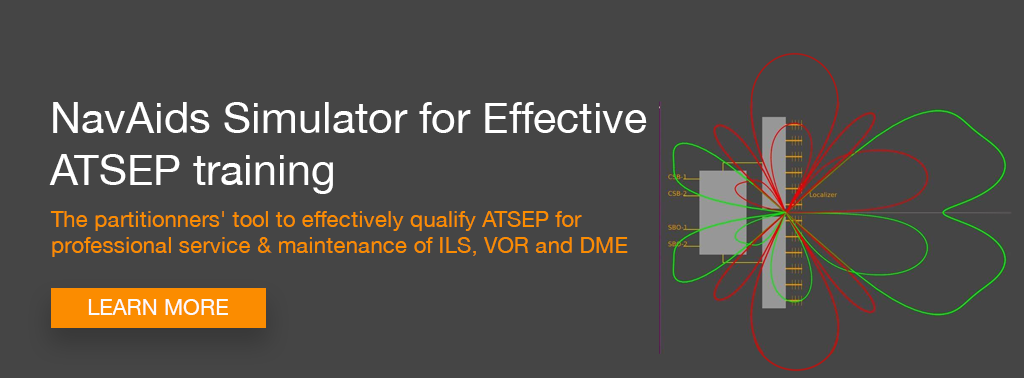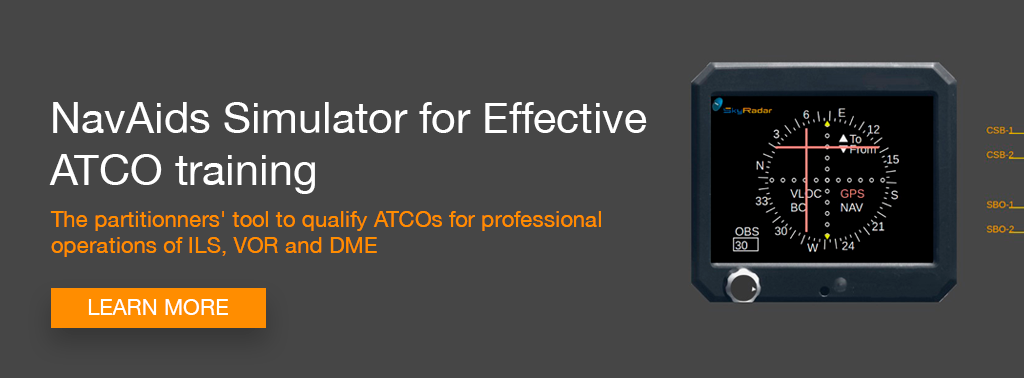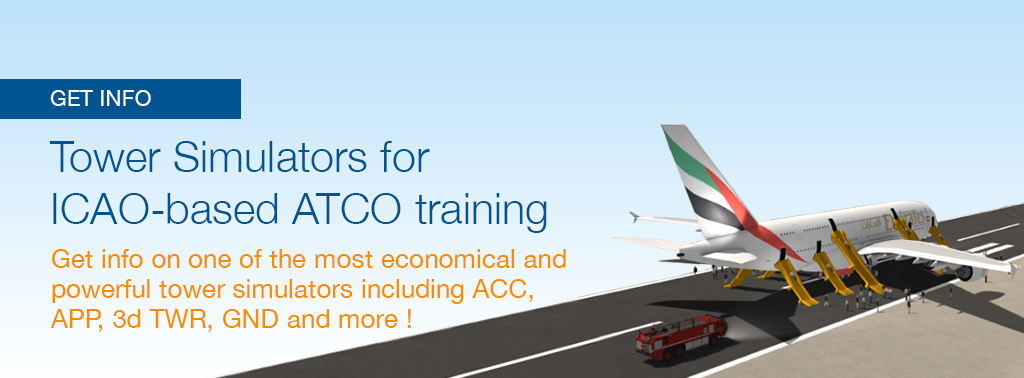This article explains how SkyRadar's NextGen 8 GHz Pulse radar can be used for ATSEP and ATCO training.
This document looks suggests a curriculum for ATCO and ATSEP in civil aviation and defence.
A general curriculum including also SkyRadar's 24 GHz PSR and FMCW for ATC and Universities can be found in the article Curriculum for NextGen 8 GHz Pulse, 24 GHz PSR and 24 GHz FMCW.
 We suggest a practically oriented curriculum for air traffic control personnel. In ATC, the training supply will vary between Air Traffic Controllers (ATCO) and Air Traffic Safety Electronic Personnel (ATSEP). For ATCO's it is important to understand the functional principles and the operations. In case of malfunctioning they need to have an understanding about what is wrong and able to rapidly communicate the problem to the ATSEP in charge.
We suggest a practically oriented curriculum for air traffic control personnel. In ATC, the training supply will vary between Air Traffic Controllers (ATCO) and Air Traffic Safety Electronic Personnel (ATSEP). For ATCO's it is important to understand the functional principles and the operations. In case of malfunctioning they need to have an understanding about what is wrong and able to rapidly communicate the problem to the ATSEP in charge.
ATSEP need to understand functional principle and operations too, but their focus is the rapid servicing. Based on the erratic behavior of the system (e.g. perturbed plots and tracks in the PPI), they shall be able to rapidly locate the error and fix it.
The NextGen Pulse radar is the perfect tool for know-how transfer in the context of the delivery and installation of a new primary surveillance radar. Concepts and features of the new radar can be easily trained in a sustainable way.
The skills and knowledge of ATCOs and ATSEP vary a lot, depending on the countries but also on the specific professionals' experience and state in their individual learning paths.
Our experience that we always need to adapt our actual syllabus on the fly during our training. The good news is that this is easy with the NextGen pulse. It is a completely flexible radar lab with a real radar. And we provide lots of teaching support documents which will help the lecturer to adapt the training on his or her specific training group.
You find more pedagogical background and reasoning in the Comprehensive Training Manual.
For sample exercises please look at our NextGen 8 GHz Exercise Manual.
Our objective is to enable the lecturers and trainers for ICAO compliant training as defined in the docs for ATSEP and the ICAO Doc 10057 for ATSEP.

The SkyRadar NextGen 8 GHz Pulse aims to train radar technology, as defined be ICAO in the sections on surveillance. It can be used from the phase of qualification up to development training. Training supply and syllabus need to be always adapted to the specific teaching objectives.
The fact that the NextGen Pulse can be accessed remotely (managed by the teacher) makes it also the perfect On-the-Job (OJT) Training tool e.g., in the Unit Training section.
Having said that the Pulse radar is a tool for radar training, it cannot be the only tool for ATSEP and ATCO qualification. Another important part in the ICAO based qualification is Aerodrome, Approach and En-Route Training. For that we offer the simulator for TWR, APP, ACC and GND for ATSEP and ATCO.
For the navigation parts we offer the NavAids Simulator.


The structure of this document
Hereafter we suggest a curriculum in an overview form. In brackets we define documentation and handouts to support each topic. If not hyperlinked when first introduced, the documents are of limited access to SkyRadar customers and partners (please contact us for samples). The Annex refers to related document names.
If you are an interested lecturer from an ATC-academy or university, please contact us for more details and samples.
Also, if interested in curriculum information about Artificial Intelligence related to radar technology or other contents, please contact us for related information.
Introduction
* Basic Principle of Operation (Radar Basics 1.1)
* Primary Radars in Air Traffic Control (Radar Basics 1.4 )
* Classification of Radar Sets (Radar Basics 1.6)
Basics with the Pulse Radar
* Pulsed Radars (Pulse and PSR Manual)
* A-Scope (Pulse & PSR Manual, FreeScopes Manual, Pulse and PSR Training Exercise Manual)
* B-Scope (PSR Manual, FreeScopes Manual, Pulse & PSR Base Unit Training Exercise Manual )
* Plan Position Indicator (PPI) (Pulse & PSR Manual, FreeScopes Manual, Pulse & PSR Base Unit, Training Exercise Manual )
* Range resolution (Pulse & PSR Base Unit Training Exercise Manual )
* Sensitivity Time Control STC (Pulse & PSR Base Unit Training Exercise Manual )
* Effect of Noise (Pulse & PSR Base Unit Training Exercise Manual )
* Threshold function and C-FAR (Pulse & PSR Base Unit Training Exercise Manual )
* Radar Signal Processing (Radar Basic 2.4.1-2)
* IQ Signal Processing
* Radar Receiver (Radar Basics 2.3.1)
* Filters (Radar Basics 2.3.3)
* Sensibility
* Radar Equation (Radar Basics 1.2)
* Time/Distance Relation
* Radar Cross Section (Radar Basics 1.3)
* Spectrum Analysis (Power Spectral Density Analysis)
Theory and Practice applied
* Radar Antenna and Tracking Antenna (Radar Basics 2.1.1-2)
* Antenna Diagram
* Radar Transmitter (Radar Basics 2.2.1)
* Concept of Coherence (Radar Basics 2.2.2)
Annex
Documentation
Radar Basics 1.0.docx History of Radar ......................................................... 1
Radar Basics 1.1.docx Basic principle of operation ...................................... 2
Radar Basics 1.2.docx Radar Equation ............................................................. 3
Radar Basics 1.3.docx Radar Cross Section ................................................... 4
Radar Basics 1.4.docx Primary Radar in Air Traffic Management ................ 5
Radar Basics 1.5.docx Over–The–Horizon Radars ........................................... 6
Radar Basics 1.6.docx Classification of Radar Sets ...................................... 7
Radar Basics 2.1.1.docx Radar Antenna .......................................................... 8
Radar Basics 2.1.2.docx Tracking Radar Antenna ........................................... 9
Radar Basics 2.1.3.docx Radar Antenna with Synthetic Aperture ................ 10
Radar Basics 2.2.1.docx Radar Transmitter ..................................................... 11
Radar Basics 2.2.2.docx Concept of Coherence............................................ 12
Radar Basics 2.2.3.docx Intrapulse Modulation .............................................. 13
Radar Basics 2.3.1.docx Radar Receiver ........................................................ 14
Radar Basics 2.3.2.docx Superheterodyne Principle ...................................... 15
Radar Basics 2.3.3.docx Matched Filter /Matched Receiver ......................... 16
Radar Basics 2.4.1.docx Radar Signal Processing ........................................ 17
Radar Basics 2.4.2.docx Digital Signal Processing ......................................... 18
Radar Basics 2.4.3.docx Local Tracking .......................................................... 19
Radar Basics 2.5.1.docx Radar Displays ......................................................... 20
Radar Basics 2.5.2.docx Plan Position Indicator ............................................ 21
Radar Basics 3.1.docx Electronic War ............................................................. 22
Radar Basics 4.1.docx Practical Training ......................................................... 23





